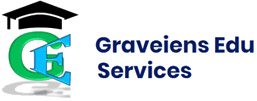Website Development Case Study




Overview
Our client, a leading European provider of educational services, was having trouble managing its portfolio of technology solutions, which were utilized by nearly 2 million students and educators each day. We built new, high-performance, mission-critical applications and assisted our client in managing and modernizing the existing application portfolio. Our client's goal of becoming an integrated, cloud-native EdTech platform that provides personalized education and learning services to a wide range of students and a supporting ecosystem has been achieved with the help of graviens developers.
Our client has built a portfolio of applications over time, both internally and through acquisitions, with the goal of becoming the education sector's complete software platform.



However, it faced the following significant difficulties:
- Modernize legacy applications and support cloud deployments Modernize aging technology stacks across multiple product lines.
- New feature development to keep up with changing regulations and market needs Innovate and become a provider of personalized, student-centred learning solutions.
How we Dealt
To assist the client in overcoming its obstacles and pursuing a path of growth and innovation, the website development team at Graviens provided the much-needed technology and product stewardship.
The partnership's most important aspects are:
- Establishing a specialized, high-quality team with expertise in a variety of technologies, including Docker, Kubernetes, Javascript, and other technologies.
- Adopting an integrated process with a unified workflow supported by tools and automation for continuous delivery and frequent releases In a very short time, our client succeeded in building a high-performance development and delivery organization that is relied upon by the client as an engine of innovation.
- Re-architecture of key applications using new paradigms such as event-sourcing and CQRS. Quickly scaling up to a 40-member operation spread across multiple scrum teams that are fully integrated with the native teams of the clients.
Results
Our client was able to achieve the following successes as a result of their strategic partnership with GravEiens Eduservices.
- Build and deploy applications quickly with innovative new features, reduce the time required for new releases, and achieve higher quality with test automation to emerge as the leading cloud-native EdTech platform in the European market.
- Rearchitect and modernize legacy applications.
- Stabilize maintenance of the current portfolio.


The Client
In order to provide industry-relevant, technology-based, research-driven education, a not-for-profit institution was established.
The Objective
Develop a mobile-first website that is user-friendly, packed with useful information, effectively conveys the brand's story, and produces business results. The website had to emphasize the benefits of a young, vibrant, aspirational, and forward-looking "voice."
The Challenge
- To create a delightful experience for two very different audiences, GenZ (potential students) and GenX (parents of potential students), and to accurately portray the brand in accordance with its archetype and personality. To create a modern-looking, high-performance website that is optimized for search engines:
- A score of at least 50 on Page Speed Insights 2 seconds for page downloads 80+ score for money pages The TIC Approach TIC took a structured approach to the task.


Solution
We started the process with a thorough Brand Study. We conducted extensive research on the target stakeholder groups of the University through digital surveys and interviews, intense discussions with NU's top leadership, and reference work on previous media coverage.
From the insights gathered, the university's brand differentiators (from the perspective of stakeholders), brand messaging architecture, brand archetype, and brand physique were derived. We also deciphered the experiences of stakeholders in the form of the CSAT index and NPS scores that the university uses to make important strategic decisions.
An extensive user experience (UX) study, which sought to comprehend user behaviour and identify the target audience's requirements and issues, followed.It required:
Focus group discussions with internal stakeholders (Founders, Nurturers, Placements, Admissions, and Human Resources) qualitative and quantitative inputs from the target demographic (Students, Parents, Alumni, Faculty) Secondary research that included Google Analytics, Web Research, Analysis, and Brand Study Benchmarking competition Team TIC then proposed a content strategy and design based on this initial research and analysis of both studies.
Results
A thorough Brand Study was our first step. Through digital surveys and interviews, in-depth discussions with top leadership, and reference work on previous media coverage, we carried out extensive research on the University's target stakeholder groups.
The university's (from the perspective of stakeholders) brand differentiators, brand messaging architecture, brand archetype, and brand physique were derived from the collected data. In addition, we deciphered the experiences of stakeholders using the CSAT index and NPS scores, which the university uses to make crucial strategic decisions.
Following that, a comprehensive user experience (UX) study was conducted to comprehend user behaviour and identify the requirements and issues of the target audience.It needed:
Focus groups with internal stakeholders (Founders, Nurturers, Placements, Admissions, and Human Resources) qualitative and quantitative input from the target demographic (Students, Parents, Alumni, Faculty) Secondary research with Google Analytics, Web Research, Analysis, and Brand Study Benchmarking competition Team TIC then proposed a content strategy and design based on this initial research and analysis of both studies.

All Rights Reserved by GravEiens Eduservices | Copyright © 2018 - 2023 GravEiens Eduservices.com

